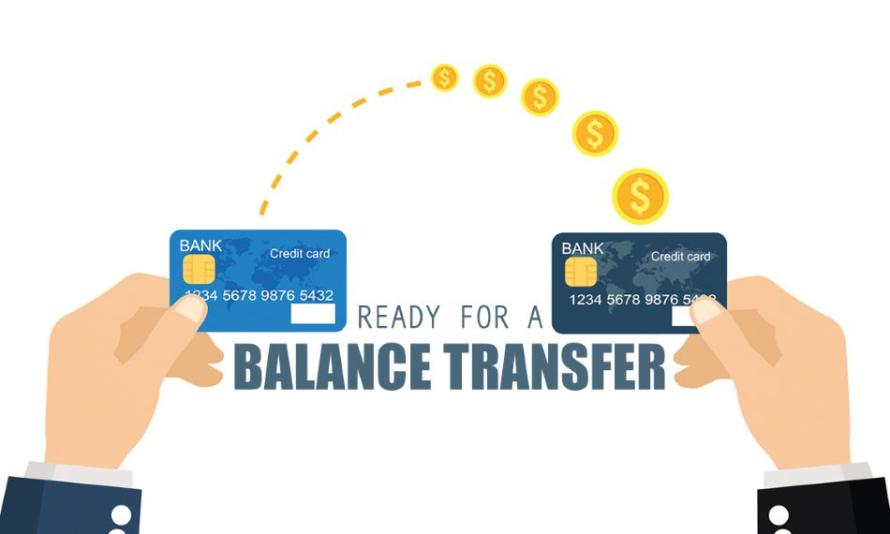What is a Balance Transfer Credit Card?

A balance transfer credit card lets you move your debt from your old credit cards to a new one. The new card often has a lower interest rate or even no interest for a limited time. This means you can focus on paying off what you owe without extra interest charges. It makes paying off debt easier and helps you save money.
How Does a Balance Transfer Work?
When you transfer a balance, your new credit card company pays off the debt on your old credit cards. Instead of managing multiple payments, you now owe the full amount to the new card and make payments to that company. The main advantage is that you may get a lower interest rate, and some cards even offer 0% interest for a limited time. This means that during this period, all your payments go toward reducing your debt instead of paying extra interest.
Benefits of Balance Transfer Credit Cards
- Lower Interest Rates: Many of these cards come with a special offer of 0% interest for a limited time (usually 6 to 21 months). This means you can pay off your debt without worrying about extra interest charges.
- Easier Debt Management: Instead of keeping track of multiple credit card bills, you can move all your debt to one card. This makes it simpler to manage payments and stay organized.
- Faster Debt Payoff: Since you won’t have to pay much (or any) interest during the introductory period, all your payments go directly toward reducing the main debt. This helps you clear your balance quicker.
- Saving Money: If you transfer your balance from a high-interest credit card to a low or zero-interest card, you’ll spend less on interest fees. Over time, this can lead to big savings.
Things to Think About Before Applying
- Balance Transfer Fees – When you move debt from one card to another, most banks charge a fee. This fee is usually between 3% to 5% of the amount you transfer.
- Limited 0% Interest Period – The 0% interest offer doesn’t last forever. Once the promotional period ends, any remaining balance will start collecting regular interest.
- Credit Score Needed – To get approved for a balance transfer card, you usually need a good or excellent credit score.
- Effect on Credit Score – Applying for a new credit card causes a hard credit check, which can slightly lower your score for a short time.
- Smart Spending Habits – After transferring your balance, try not to rack up new debt on your old credit cards, or you might end up in more financial trouble.
Steps to Execute a Balance Transfer
- Understand Your Debt: Determine how much you need to transfer and check the interest rates on your current credit cards.
- Find the Best Balance Transfer Card: Compare different credit card options that offer low or 0% interest rates on balance transfers.
- Check If You Qualify: Review the eligibility criteria, such as credit score and income requirements, before applying.
- Apply for the New Card: Submit your application and, once approved, follow the bank’s process to start the balance transfer.
- Wait for the Transfer to Complete: The transfer may take a few days to a couple of weeks. Monitor both your old and new accounts to ensure it goes through.
- Plan Your Repayments: Calculate how much you need to pay each month to clear the balance before the 0% interest period ends.
Check Your Debt and Credit Limit
When choosing a balance transfer credit card, most people focus only on getting the lowest interest rate for the longest time. While that’s important, you should also think about your credit score.
It’s usually best to keep your old credit card open after transferring the balance. Closing it reduces your total available credit, which could lower your credit score. Also, try not to use up the entire credit limit on your new card. For example, if your new card has a ₹1,50,000 limit and you transfer ₹1,50,000, your credit score may still drop, even if you keep your old card open.
Potential Pitfalls to Avoid
- Missing Payments: If you don’t pay on time or skip a payment, you might lose the low-interest offer you got at the beginning. This means you could end up paying a much higher interest rate.
- Ignoring Transfer Fees: When moving your balance to a new card, there might be a fee. If you don’t check for these fees, you could be surprised by extra costs that make the transfer less beneficial.
- Still Using Old Credit Cards: If you keep spending on your old credit cards after transferring the balance, your total debt will grow instead of reducing. This can make it harder to pay off what you owe.
- Not Paying the Full Balance in Time: The low-interest period doesn’t last forever. If you don’t pay off the transferred balance before this period ends, you may face high interest on the remaining amount, making it much more expensive.
Who Can Benefit from a Balance Transfer Credit Card?
- People with Expensive Credit Card Debt: If you have a credit card with a high interest rate and you qualify for a lower or 0% interest offer, you might benefit from transferring your balance. This can help you save money on interest and pay off your debt faster.
- People Who Want Easier Payments: If you have multiple credit cards and find it hard to manage different payment dates and amounts, you can combine them into one payment. This makes it easier to track and pay on time.
- People Who Can Control Their Spending: If you're good at managing money and won’t add more debt after transferring your balance, this option can work well. You should also have a solid plan to pay off the full amount before the 0% interest period ends.
How to Apply for a Balance Transfer Credit Card
Once you pick the right card, applying is easy. Most Indian banks let you apply online. Since you’ll need to enter personal details, make sure you use a secure internet connection in a private place.
You’ll need to provide:
- Your name
- Address
- PAN card number
- Income details
- Employment status
- Existing debt details (if needed)
After submitting your application, the bank will review it. Some banks approve instantly, while others take a few days to verify your details. You’ll get a confirmation by SMS, email, or phone call. The process usually takes about a week, but it may take longer for secured credit cards or if you have a low credit score.
Conclusion
In conclusion, a balance transfer credit card can be a valuable tool for managing and reducing credit card debt when used responsibly. It's essential to understand the terms, be aware of potential fees, and have a solid repayment strategy to maximize the benefits.




Leave a Reply